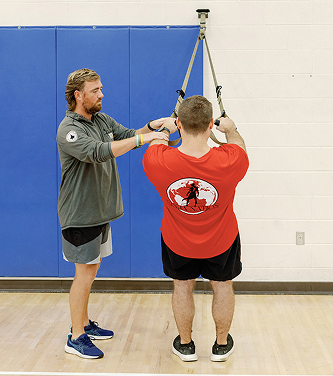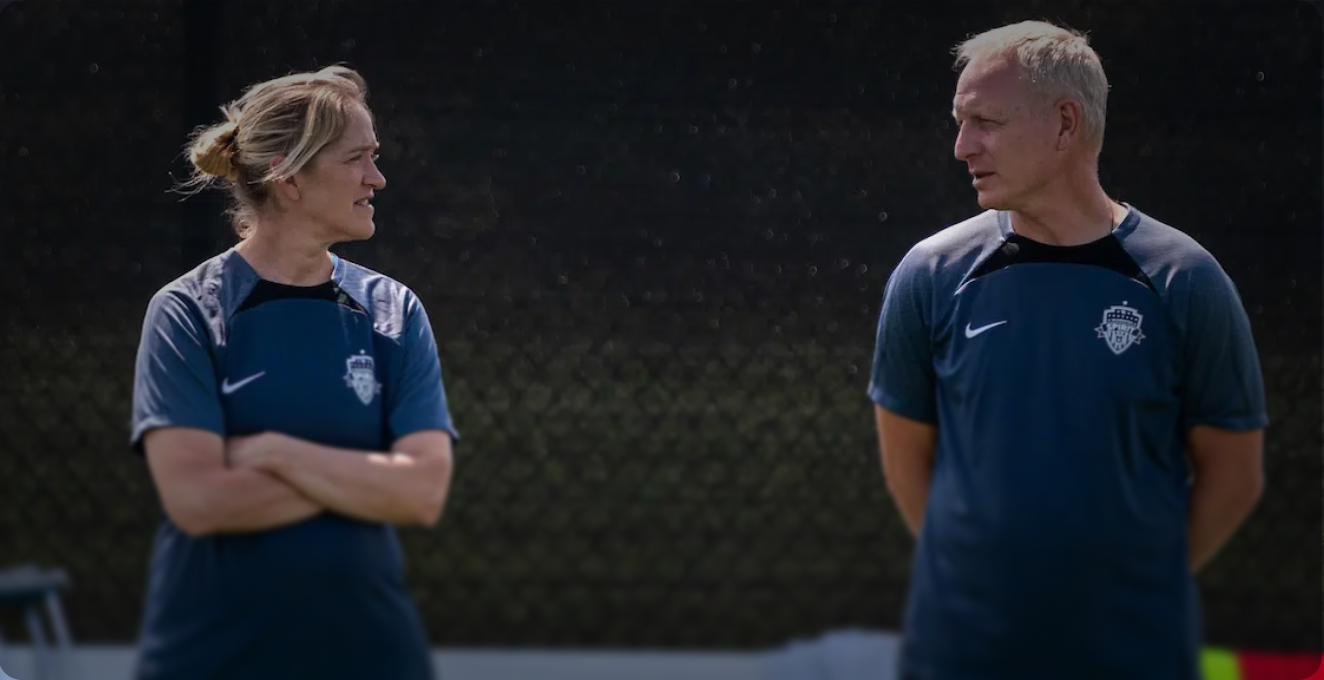How Langley Air Force Base Scaled Tactical S&C Across Five Wings
Introduction
Since 2015, Justin has dedicated his strength and conditioning career to serving tactical populations—including soldiers, airmen, and deployed personnel—across a wide range of domestic and international assignments. From early roles at Fort Eustis to supporting missile defense systems in Romania, to H2F implementation at Fort Campbell, Justin has intentionally shaped his career around serving those who serve.
Now operating at Langley Air Force Base, he continues to lead with a people-first, athlete-centered philosophy. “Everyone I work with is an athlete,” Justin says. “They just need someone to help them see it—and train like it.”
Justin’s early years in strength and conditioning exposed him to the financial and professional instability common in collegiate settings. Working two jobs—one as a fitness director and another as a volunteer coach—left him burned out and questioning the long-term viability of the path. “College athletics felt like a grind that was forcing my family to move just to keep up,” he recalls.
He was also motivated by personal family experiences, including caring for his father through cancer and learning the deeper role physical fitness can play in quality of life and healing. From that point on, his goal became clear: to help service members feel strong, confident, and capable—mentally and physically—through athletic-style programming rooted in compassion and real-world performance.

With 170 athletes on inconsistent schedules, traditional periodization isn’t realistic. Instead, Justin uses a flexible, tier-based training approach built around consistency in movement patterns rather than fixed training days. His goal is to ensure athletes press, squat, hinge, and condition multiple times per week—even if the days vary.
By using the tier system, he delivers total-body sessions tailored to each athlete’s availability. TeamBuildr plays a key role in organizing workouts, tracking progress, and allowing athletes to build sessions around their needs. The approach is adaptable, effective, and built to accommodate the unpredictable nature of tactical training demands.
Challenges
While working in Romania, Justin was managing tactical strength and conditioning using spreadsheets—a system that quickly became inefficient. Though he built out conditional formatting and templates to streamline programming, printing lift sheets and manually tracking athlete progress became overwhelming, especially as his responsibilities grew. “It worked, but it couldn’t scale,” he explains.
Once overseeing 100+ athletes at a time, Justin knew he needed a more efficient, adaptable, and scalable system. His athletes operated on unpredictable schedules, and his manual process couldn’t keep up with individualization, communication, and progress tracking.
Programming updates were time-consuming, and delivering training remotely or across units was clunky and inconsistent. The administrative burden began to pull focus away from coaching and connecting—key aspects of his mission. Simply put, the spreadsheet model couldn’t support the real-world demands of tactical S&C across diverse and dynamic units.
Solution
Justin transitioned to using TeamBuildr Strength and immediately experienced a massive boost in efficiency and flexibility. With over 160 concurrent athletes, TeamBuildr allowed him to quickly deploy tier-based programming at scale while still personalizing for each individual’s needs.
“You load the template, modify it, and boom—it’s done,” he says. His previous multi-hour daily programming routine was condensed into a single half-day each week. Through smart tagging, he could organize athletes by unit, focus area (e.g., strength vs. maintenance), and even job-specific needs—like grip work.
The easy join codes and saved templates enabled seamless onboarding and programming distribution. “It just works so well—I don’t know why anyone wouldn’t want it,” Justin notes. For remote support, TeamBuildr’s messaging and data-sharing features allowed him to coach athletes from anywhere. He also used it as a teaching tool—training airmen to build their own workouts, reinforcing autonomy and long-term health literacy.
On the data front, TeamBuildr Strength helped Justin deliver powerful insights to leadership. He tracked session RPE, attendance, and progress metrics—like improvements in number of laps run or the Army Body Composition Program. “The graphs and tables are clean, filterable by calendar, and commanders can immediately understand the impact,” he explains.
TeamBuildr’s flexibility has even supported creative solutions for specialized units, such as embedding grip-strength tools at workstations or adjusting programming formats (like converting warm-ups to circuits) to meet the specific visual preferences of intel groups. With athletes trained to navigate the app, Justin could balance hands-on coaching with broader outreach—giving briefings, training new units, and engaging leadership—all while maintaining high-quality programming.
Results
With TeamBuildr, Justin went from managing dozens of spreadsheets to coaching over 160 athletes with ease. “Now I can coach, connect, and still support five wings on one of the largest bases in the Air Force”, Davis said.
He reduced programming time from several hours per day to a half-day per week, freeing up time to focus on community outreach, education, and leadership engagement. “My athletes know how to use TeamBuildr. Even if I’m not there, they’re taken care of,” he said.

Athletes receive personalized training regardless of schedule or location, and command teams now get clear, actionable data to support retention, readiness, and injury prevention. “It lets me keep the main thing the main thing,” Justin says. He’s built a scalable, athlete-centered system that delivers high-impact coaching—both in the weight room and across the base.
Subscribe to our blog
Subscribe to receive the latest blog posts to your inbox every week.
Related posts

How Pflugerville Fire Department Scaled Its Fitness Program to Meet the Needs of 225+ Firefighters

From Email Overload to Enterprise Efficiency: How Fort Bliss's 3rd Armored Brigade Combat Team Streamlined PT Planning at Scale
